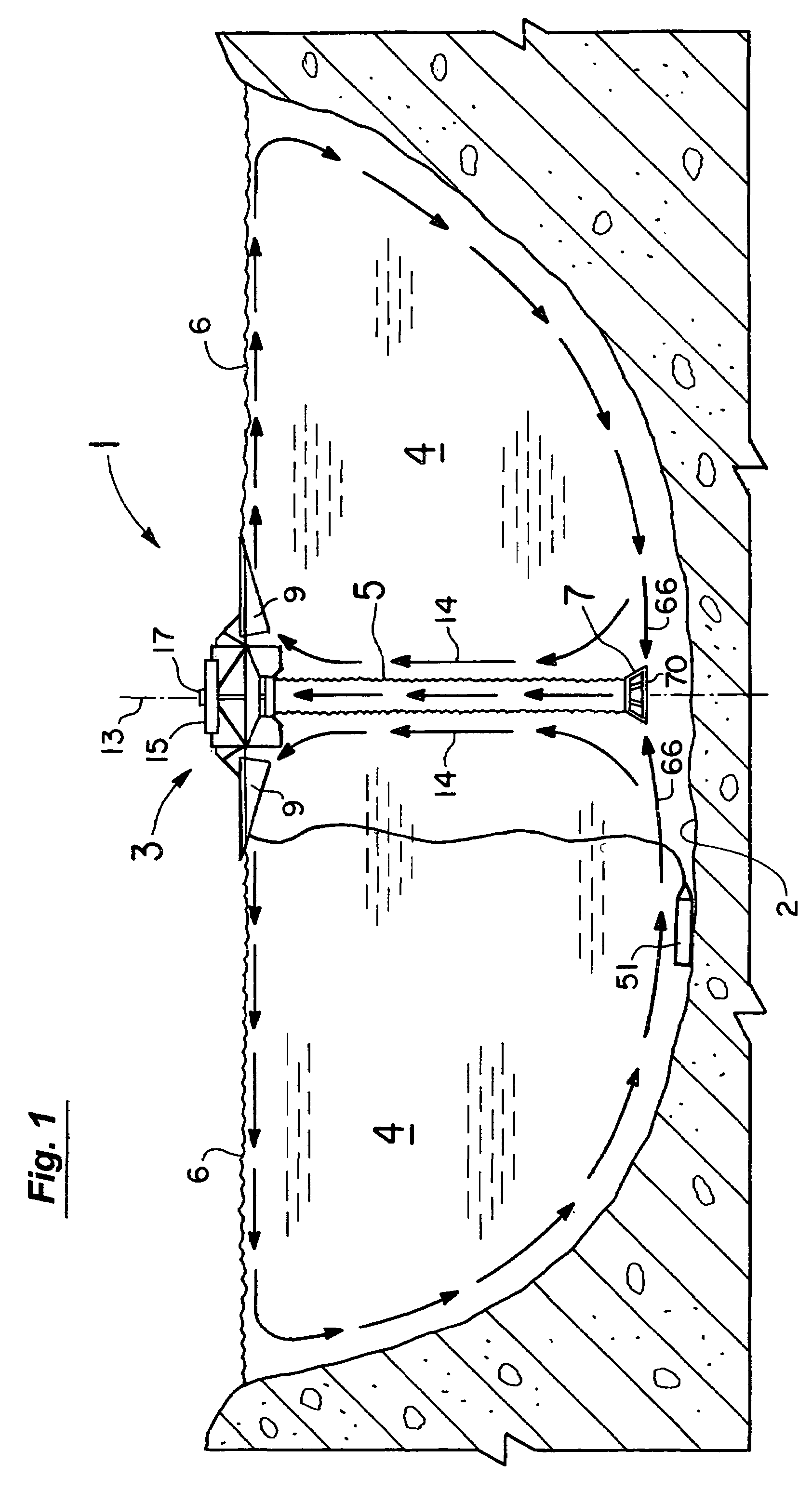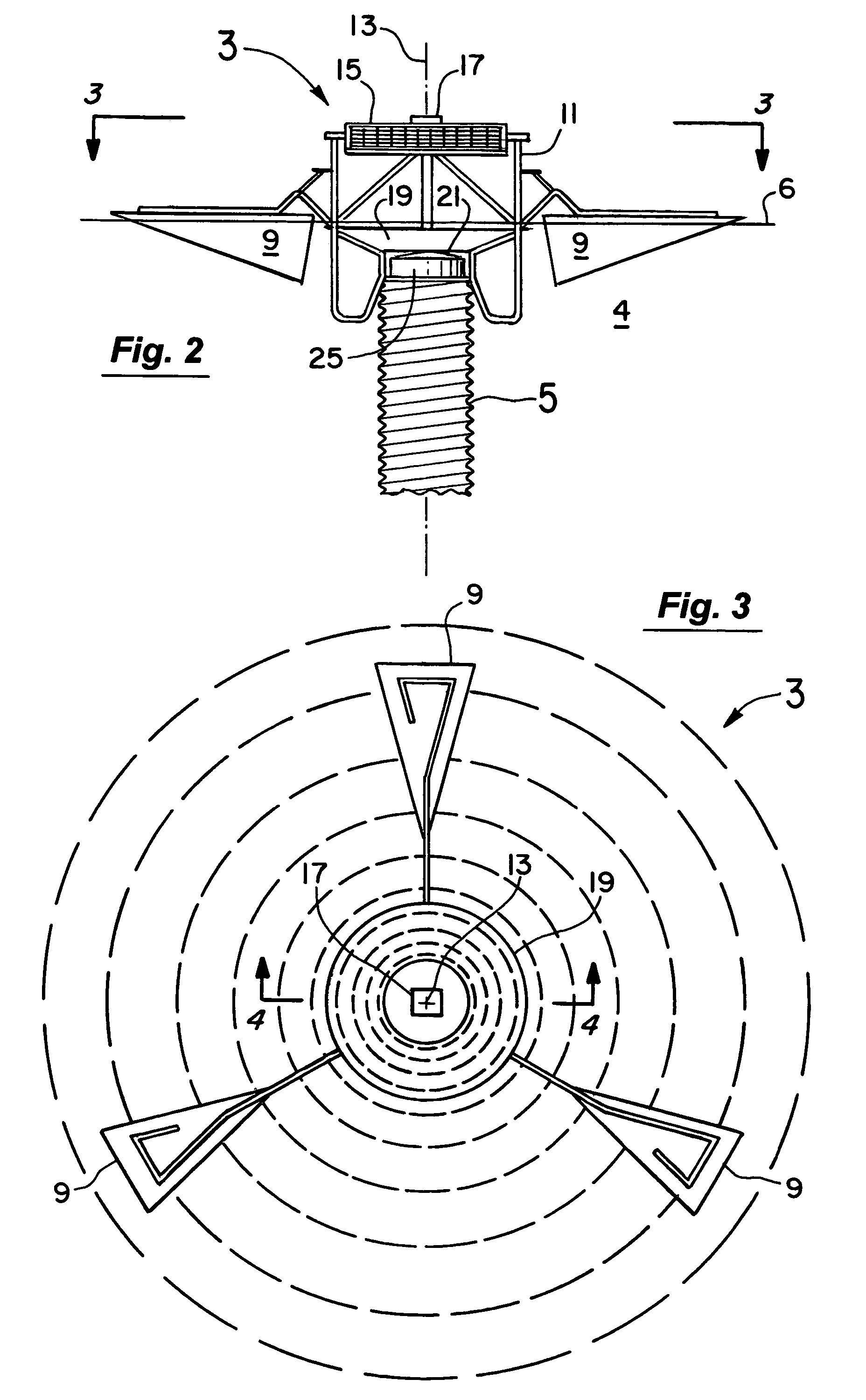Water circulation systems for ponds, lakes, and other bodies of water
a technology for ponds and lakes, applied in chemical/physical processes, energy-based wastewater treatment, machines/engines, etc., can solve the problems of high flow rate, ineffective waste processing, and strong and concentrated domestic and commercial wastes, and achieves less turbulence and high flow rate
- Summary
- Abstract
- Description
- Claims
- Application Information
AI Technical Summary
Benefits of technology
Problems solved by technology
Method used
Image
Examples
Embodiment Construction
[0042]As schematically shown in FIG. 1, the water circulation system 1 of a first set of embodiments of the present invention includes an upper flotation platform 3 with a draft hose or tube 5 depending downwardly from it to the water inlet 7. The inlet 7 is preferably positioned adjacent and slightly raised from the bottom 2 of the pond or other body of water 4. The flotation platform 3 as best seen in FIGS. 2 and 3 includes three floats 9 supported on the tubular frame 11 of the platform. The floats 9 extend outwardly of the central axis 13 and are preferably evenly spaced about the axis 13 (see FIG. 3). The floats 9 extend far enough out from the central axis 13 to provide a relative stable and buoyant support structure for the system 1 including its solar panels 15, electric motor 17, dish 19 (see also FIGS. 4 and 5), impeller 21 (see also FIGS. 4 and 6), draft hose 5, and the water inlet 7 of FIG. 1. As explained in more detail below, the draft hose 5 is also specially designed...
PUM
| Property | Measurement | Unit |
|---|---|---|
| diameter | aaaaa | aaaaa |
| diameter | aaaaa | aaaaa |
| diameter | aaaaa | aaaaa |
Abstract
Description
Claims
Application Information
 Login to View More
Login to View More - R&D
- Intellectual Property
- Life Sciences
- Materials
- Tech Scout
- Unparalleled Data Quality
- Higher Quality Content
- 60% Fewer Hallucinations
Browse by: Latest US Patents, China's latest patents, Technical Efficacy Thesaurus, Application Domain, Technology Topic, Popular Technical Reports.
© 2025 PatSnap. All rights reserved.Legal|Privacy policy|Modern Slavery Act Transparency Statement|Sitemap|About US| Contact US: help@patsnap.com



